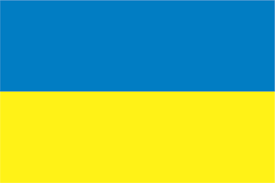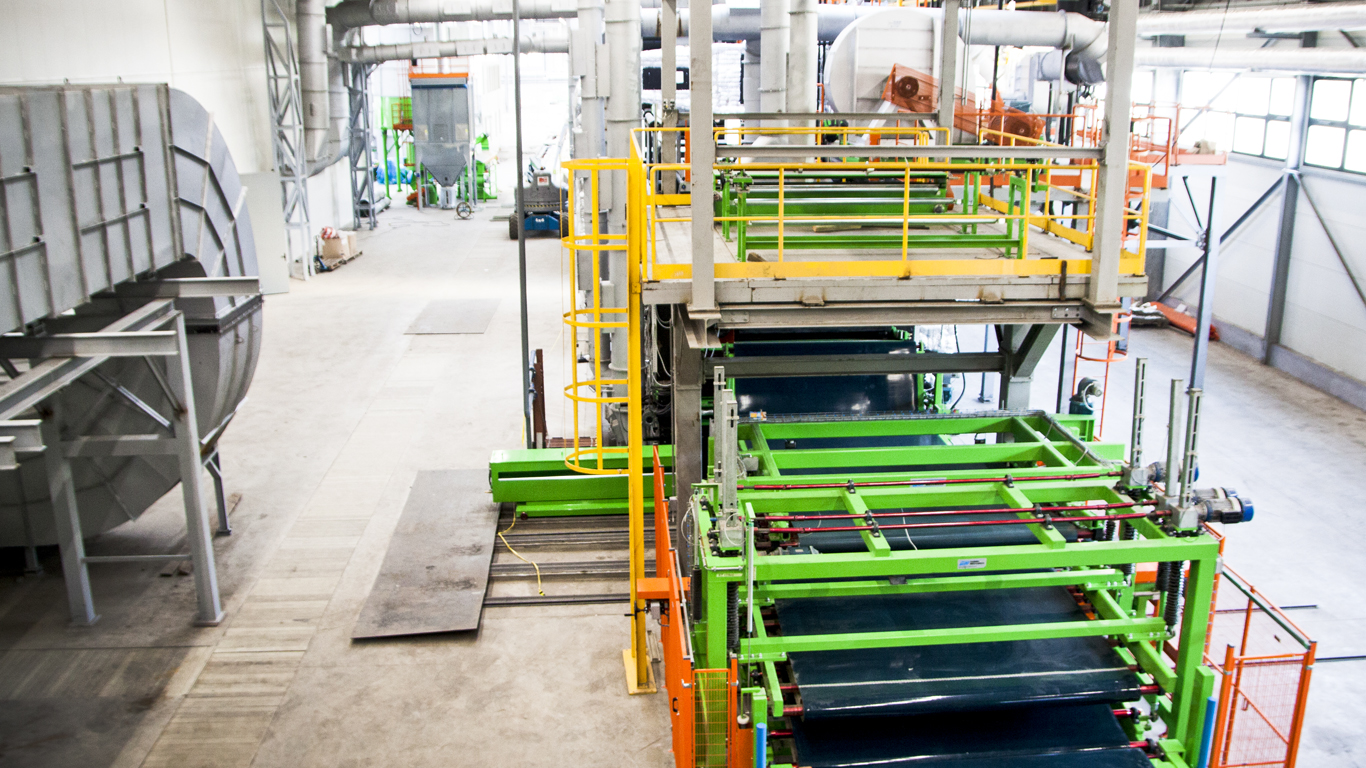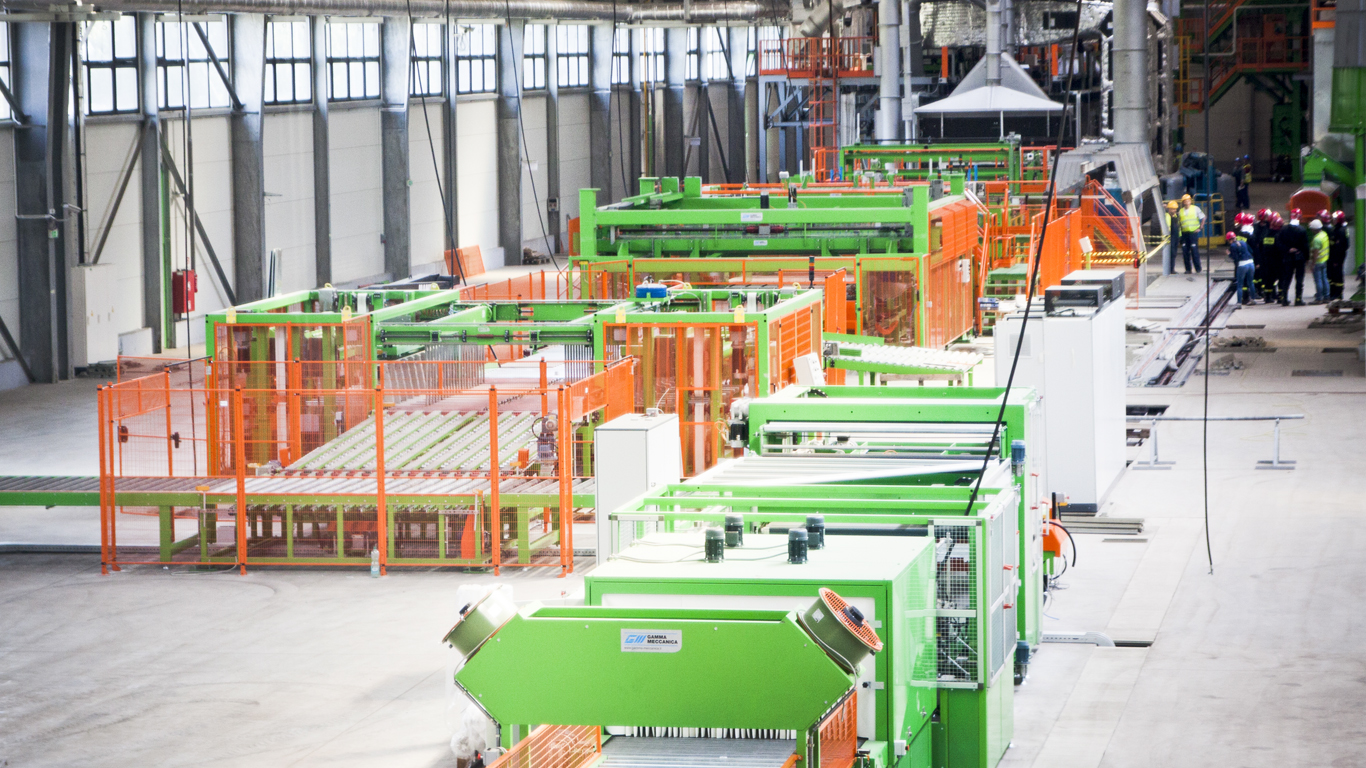Manufacturing Process Description
The main raw material for production of rock mineral wool panels is basalt and gabbro; these alkaline extrusive rocks turn into hot lava after being melted down in a shaft furnace where temperature reaches 1500 degrees. The lava in a liquid form is fed on the so called discs rotating at a speed of several thousand revolutions where it turns into natural fibres that form a liquid carpet in a forming box. The formed material is treated with a binder and hydrophobic agents to ensure excellent resistance of subsequent panels to absorption of moisture from the air and, in consequence, the highest quality of the panels. The process also ensures excellent adhesion of the product to the adhesive and other mixtures used for possible future installation. A conveyor feeds fibres laid in layers to a device where the fibres are undulated according to the type of the product manufactured. In the next step, the formed “carpet” of wool goes to a polymerization chamber where the binder is cured and a panel with the required thickness is formed. The process also takes place at a raised temperature, however not as high as that of the melting process; basically, the temperature never exceeds 300 centigrade. After leaving the chamber, the product is cooled down to the ambient temperature and then cut to appropriate length and width. The cut panels go to a stacking machine where single panels are packed into omnibus packings and foiled. A bulk pallet is wrapped in a foil sleeve, which allows for storing the product outdoors. The state-of-art process line enables PETRALANA products to reach the highest parameters and thereby to meet the most stringent European and world standards.
How are mineral stone wool panels produced?
Raw material
The main raw materials for production of mineral stone wool panels are basalt and gabbro. These are the basic monolithic stones, which turn into hot lava after being melted down in a shaft furnace. Its temperature reaches 1500 centigrade.
Natural stone fibre
The lava in a liquid form is fed on the so called discs rotating at a speed of several thousand revolutions where it turns into natural fibres forming a liquid carpet in a forming box. The carpet is treated with a binder and hydrophobic agents which later provide the panel with excellent resistance to absorption of moisture from the air.
Perfect adhesion
This process also provides the product with excellent properties of bonding with adhesive and other mixtures used for possible future installation of the product.
Different types of mineral wool
A conveyor feeds fibres laid in layers to a device where the fibres are undulated according to the specific type of the product manufactured.
Desired material thickness
The formed “carpet” of wool goes to the polymerization chamber where the binder is cured and the panel is formed to a proper thickness. This process also takes place at an elevated temperature, however not higher than 300 centigrade.
Product cut to size
After leaving the chamber, the material is cooled down to the ambient temperature and then cut to appropriate length and width.
Packaging
The products then go to a stacking machine where single panels are packed into omnibus packings and foiled. A bulk pallet is wrapped in a foil sleeve, which allows for storing the product outdoors. In such a form, mineral stone wool reaches the customer.










